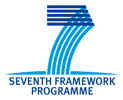The network aims to make theoretical contributions to the field of creative design by bringing together expertise in human computer interaction, psychology, arts and design. The network aims to advance our understanding of creativedesign processes applied in the scientific and technological problem solving.
This will lead to the elaboration of:
- theories and models of creative processes in general, and those involved in creative problem solving in particular
- methods, techniques and systems to support both creative design processes and creativity training
Desire offers an attractive training programme to 13 researchers consisting in expert research supervision by world leading researchers, access to training courses on foundation and advanced topics in creative design, access to complementary training and industrial secondments within network’s over 10 industrial partners, as well as participation to networks’ summers schools and conferences.
Research
Investigate the role of individual differences in visual and spatial thinking in creative problem solving and creativity training
Digital technology has challenged the concept of space, and how it can be reached, covered and understood. Increasingly, more problems are posed and solved within spatial frameworks which demand users to think spatially in everyday life, in the workplace and in science. In addition, findings indicate that spatial skills successfully predict long-term future success in science, technology and design. Studies have suggested that the traditional dichotomy between verbalisers and visualisers should be enriched with two distinct types of visual cognitive style which reflect different ways of generating mental images and processing visual-spatial information. Although individuals exhibiting either type of visual cognitive style rely primarily on imagery for solving cognitive tasks, those who are object visualisers are especially good at constructing high quality mental images of individual objects, while those who are spatial visualisers use imagery to represent and transform spatial relations. What is interesting is that these two types of visualisers appear to be mutually exclusive, despite the fact that the strategies of object visualisers are not effective for abstract spatial relations problems.
The project will explore if people can be trained to use their less preferred type of imagery in visual problem solving. Supportive in this direction are findings which suggest that strategic processes are susceptible to cultural influences. The application domain is scientific creativity, and the research methods include think-aloud protocol and eye movement analysis.
Outcomes:
This project will develop a basic understanding of the creative problem solving process. It will develop models encapsulating the heuristics employed by different types of verbal and visual thinkers, in the light of supporting creativity training. This will lead to the development of methods and tools for making efficient heuristics available to those individual who usually employ inefficient ones.



 DESIRE is an Initial Training Network funded by the European Comission, Framework 7 under Marie Curie Programme
DESIRE is an Initial Training Network funded by the European Comission, Framework 7 under Marie Curie Programme
















